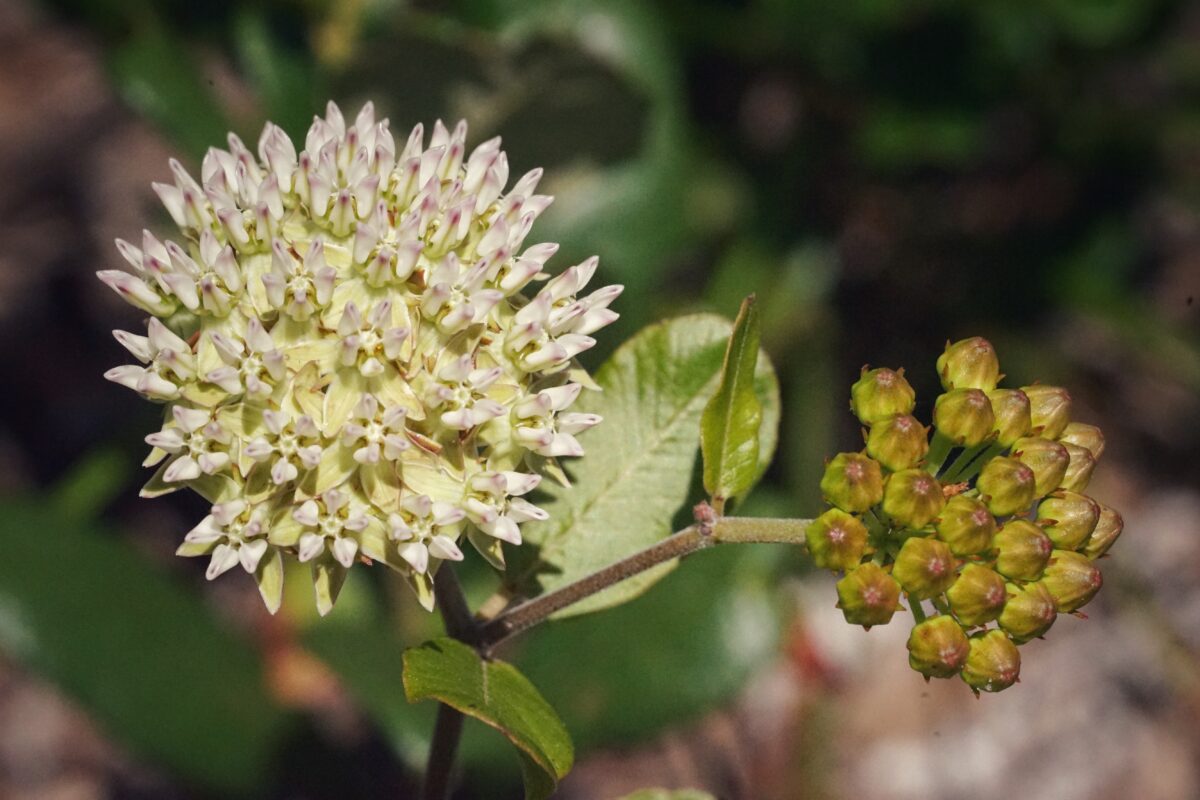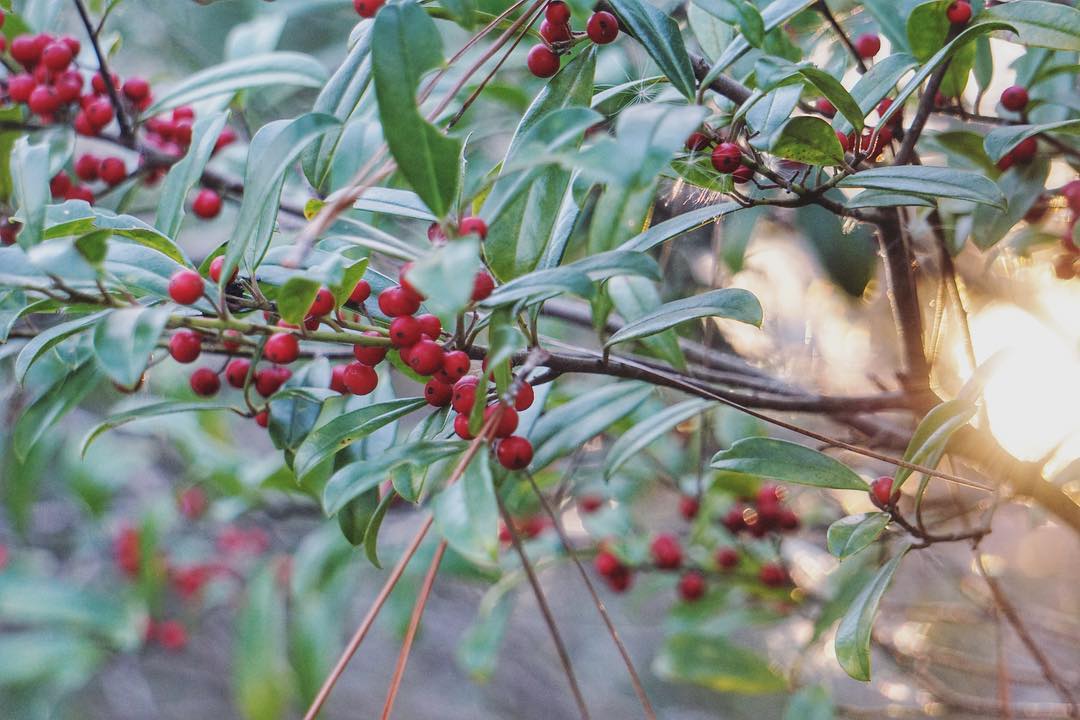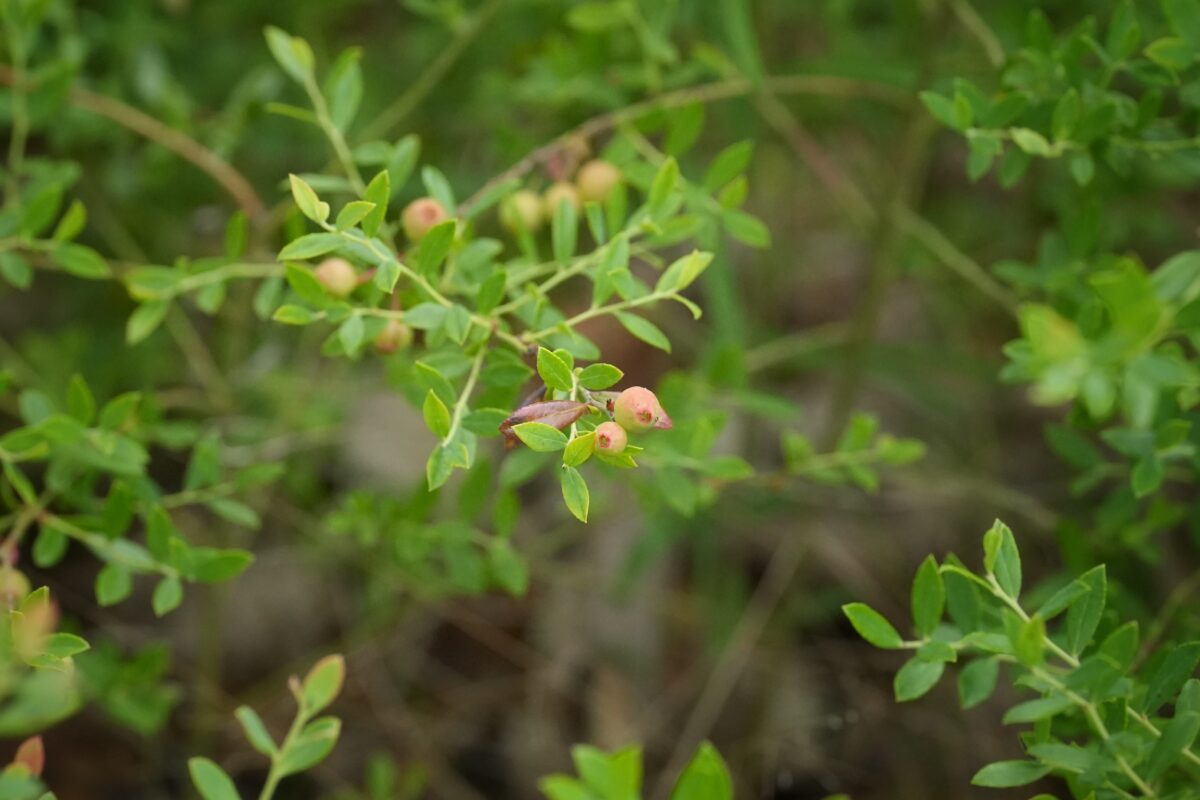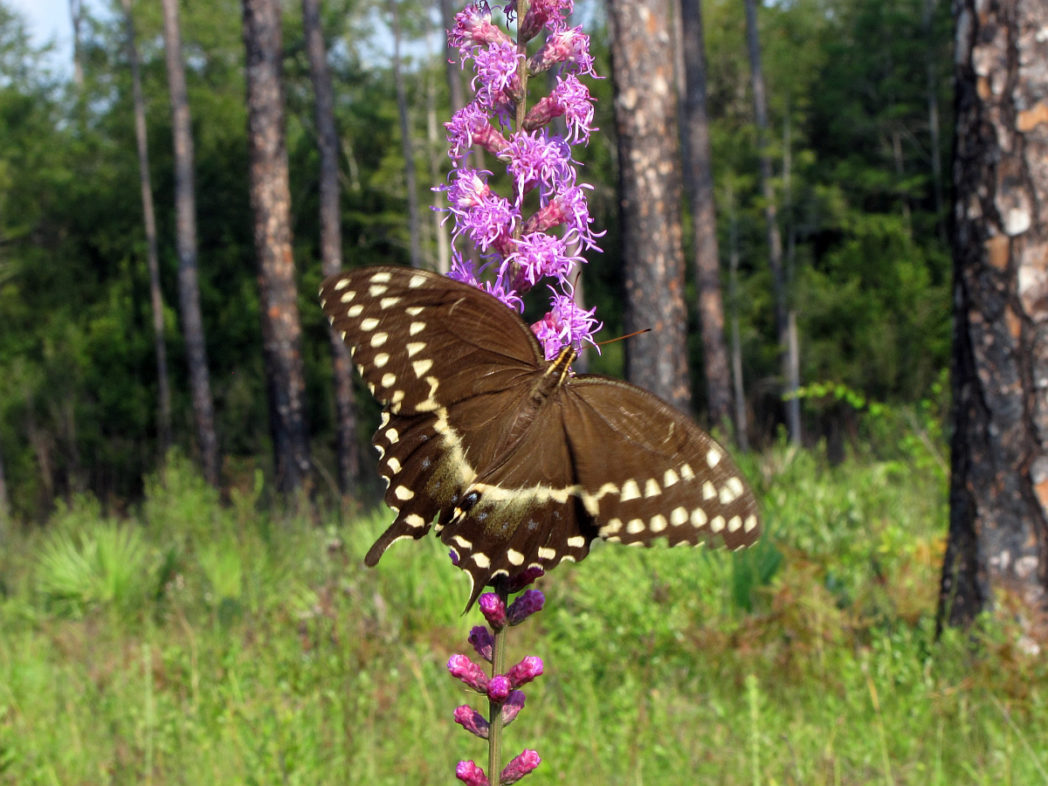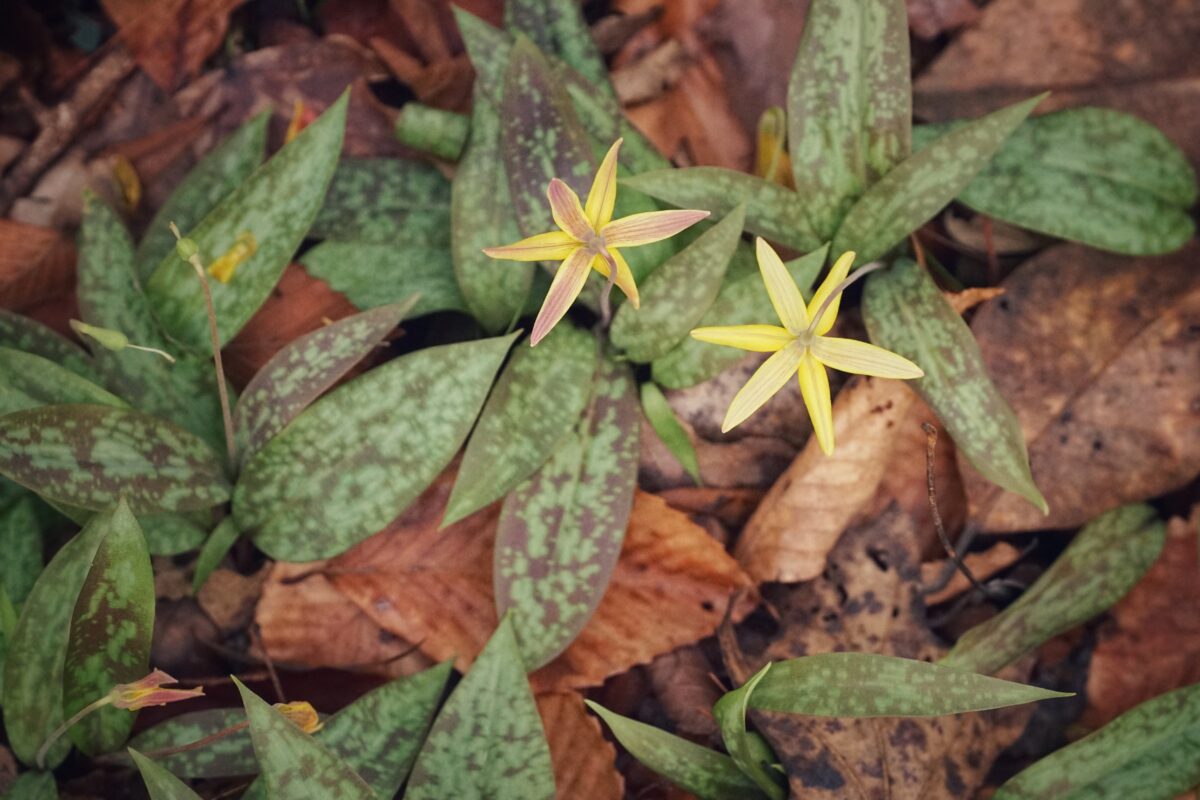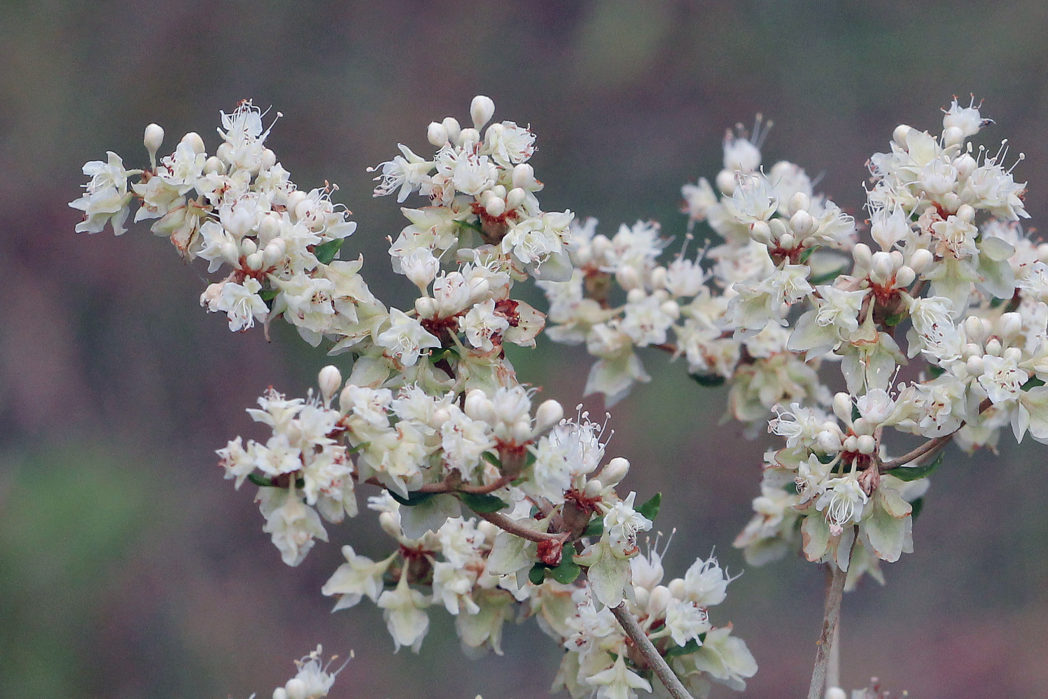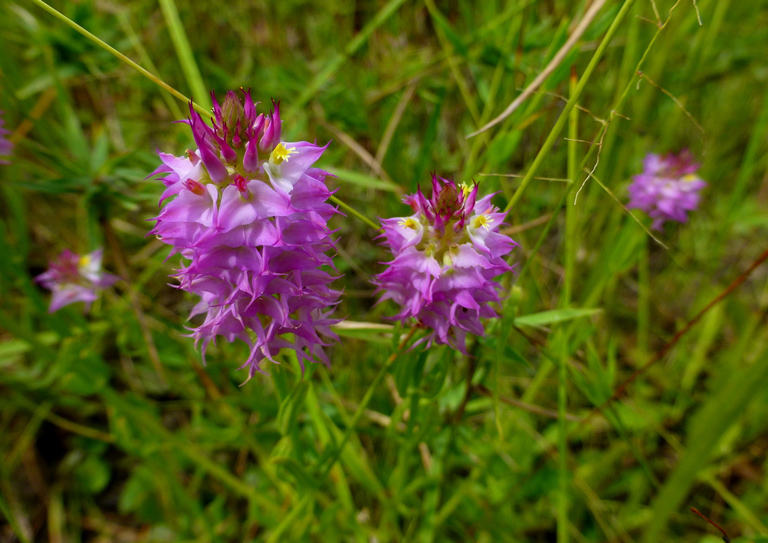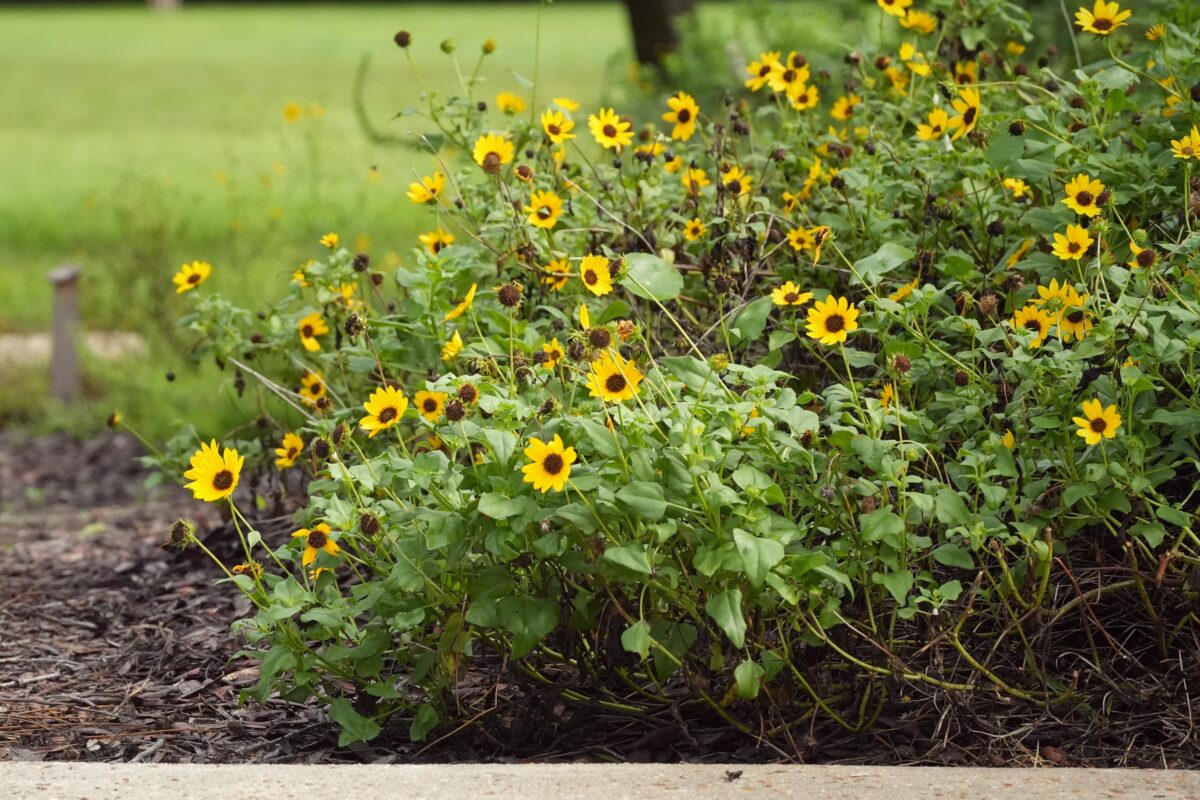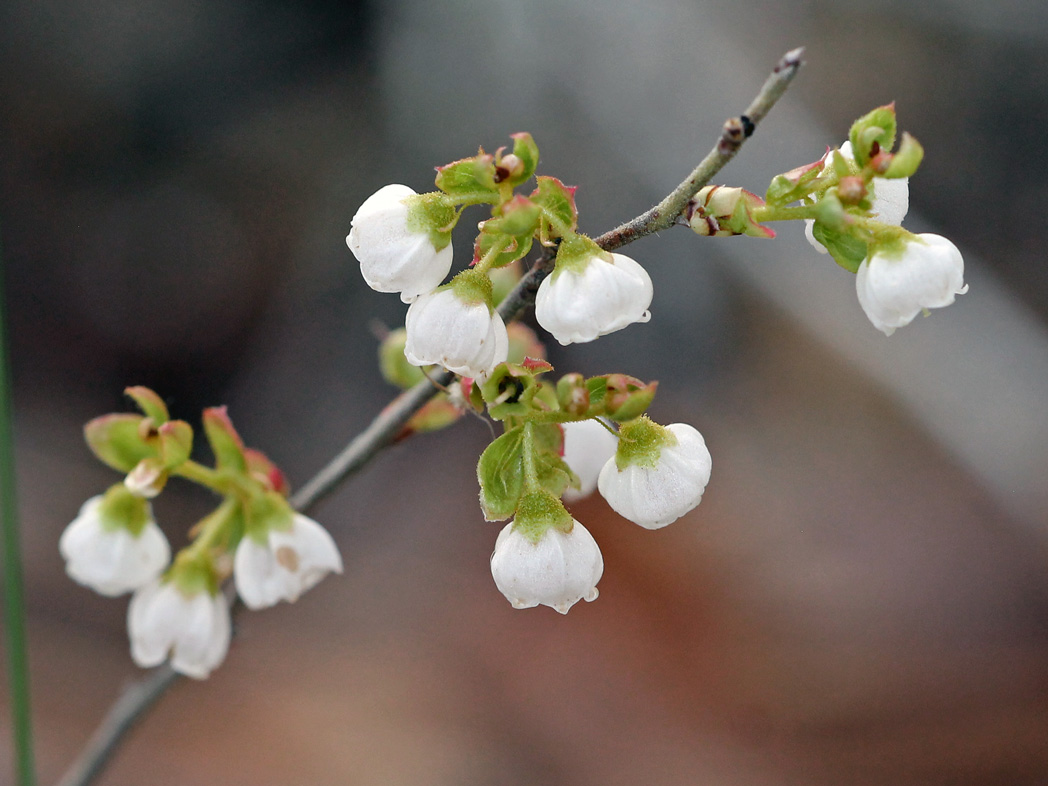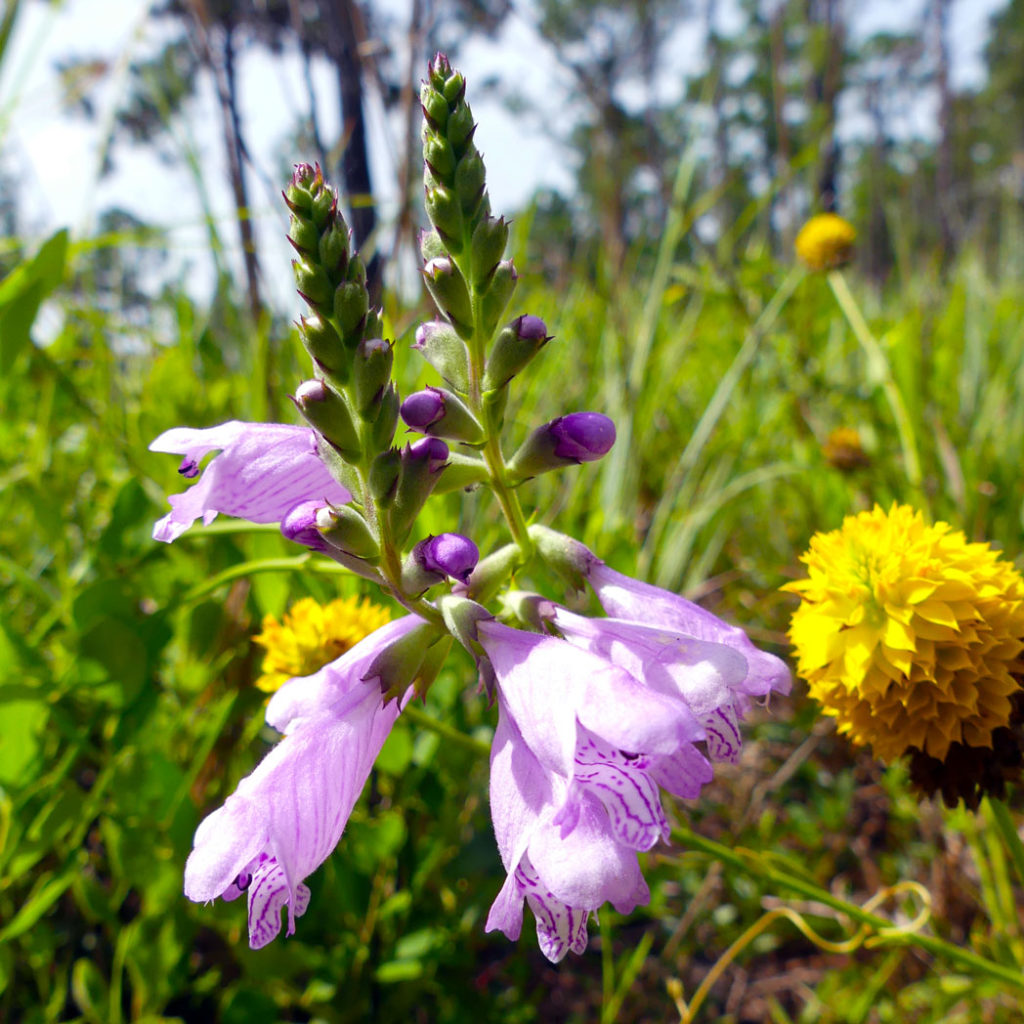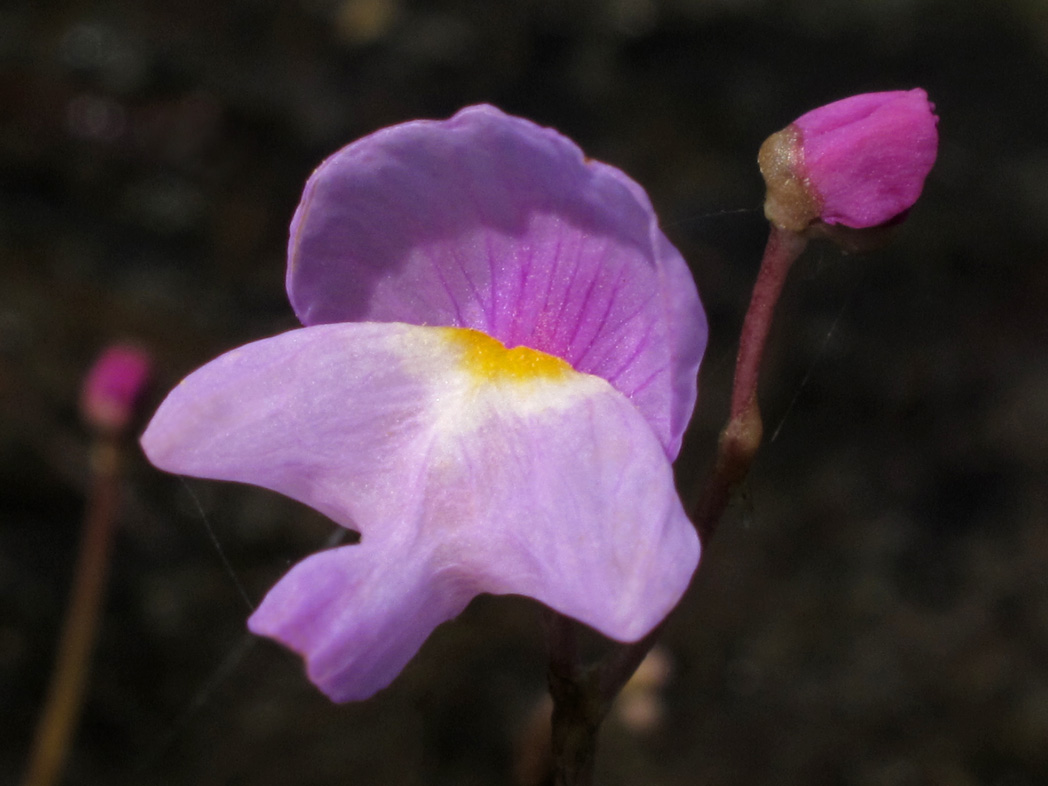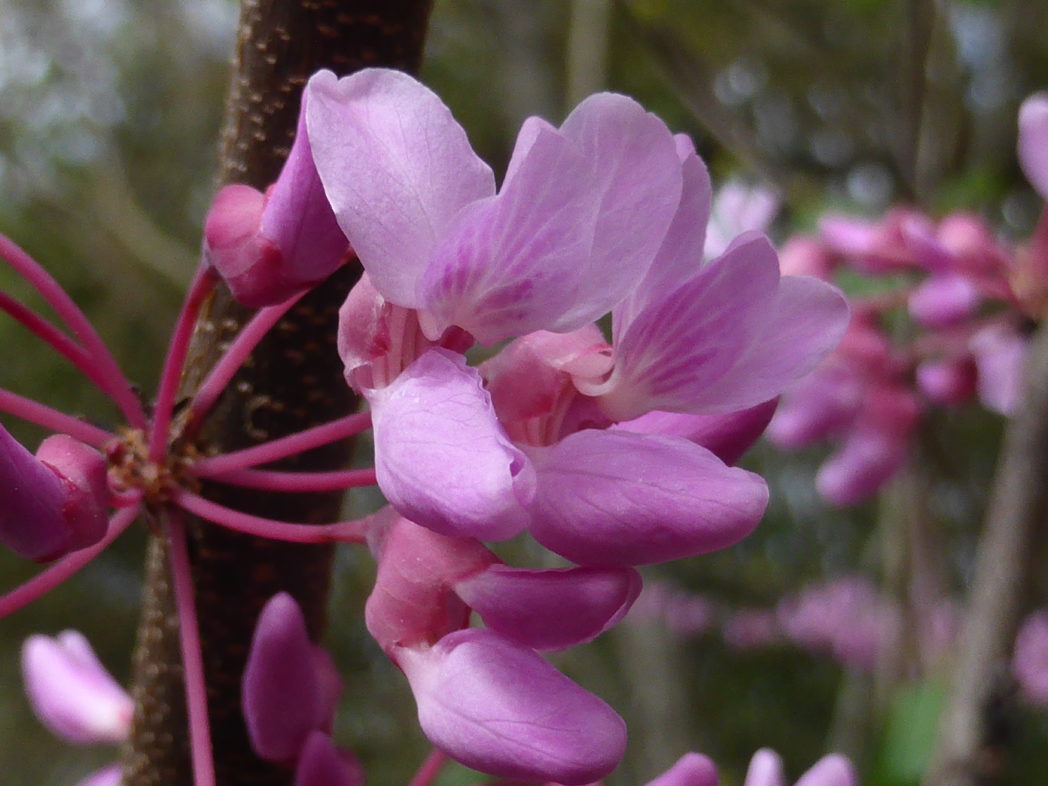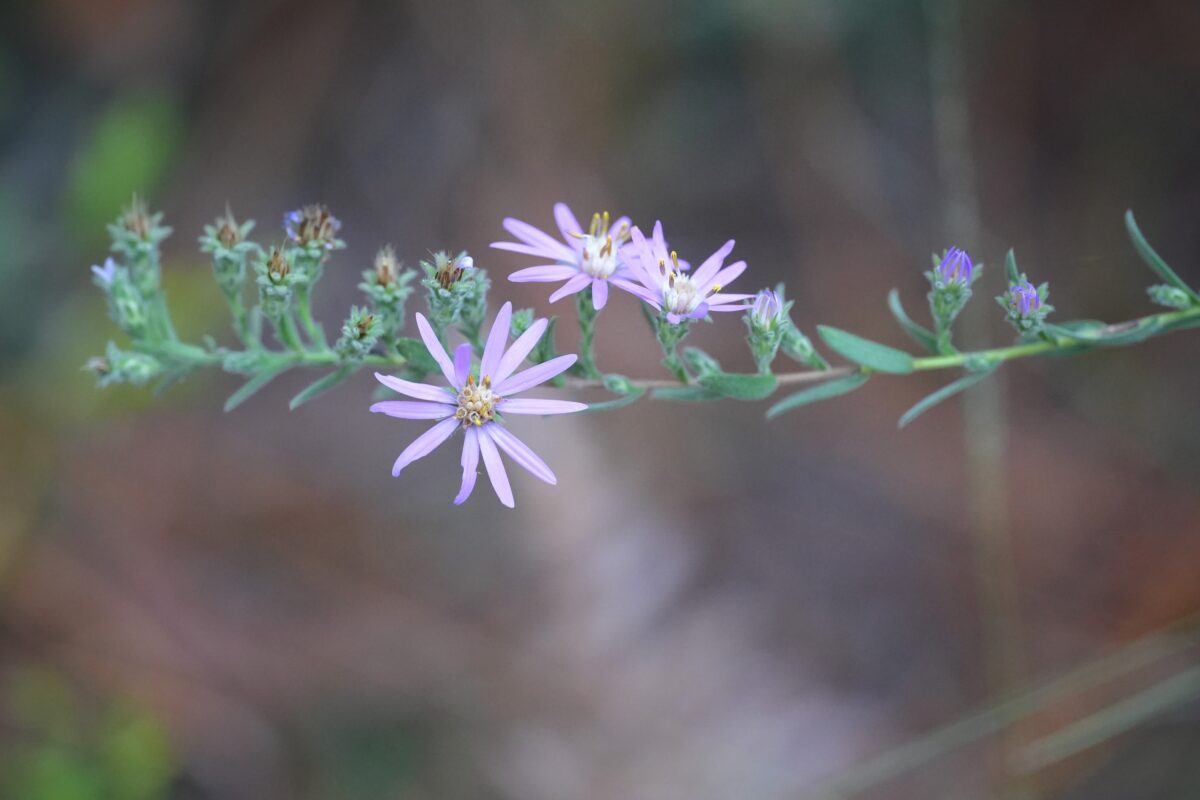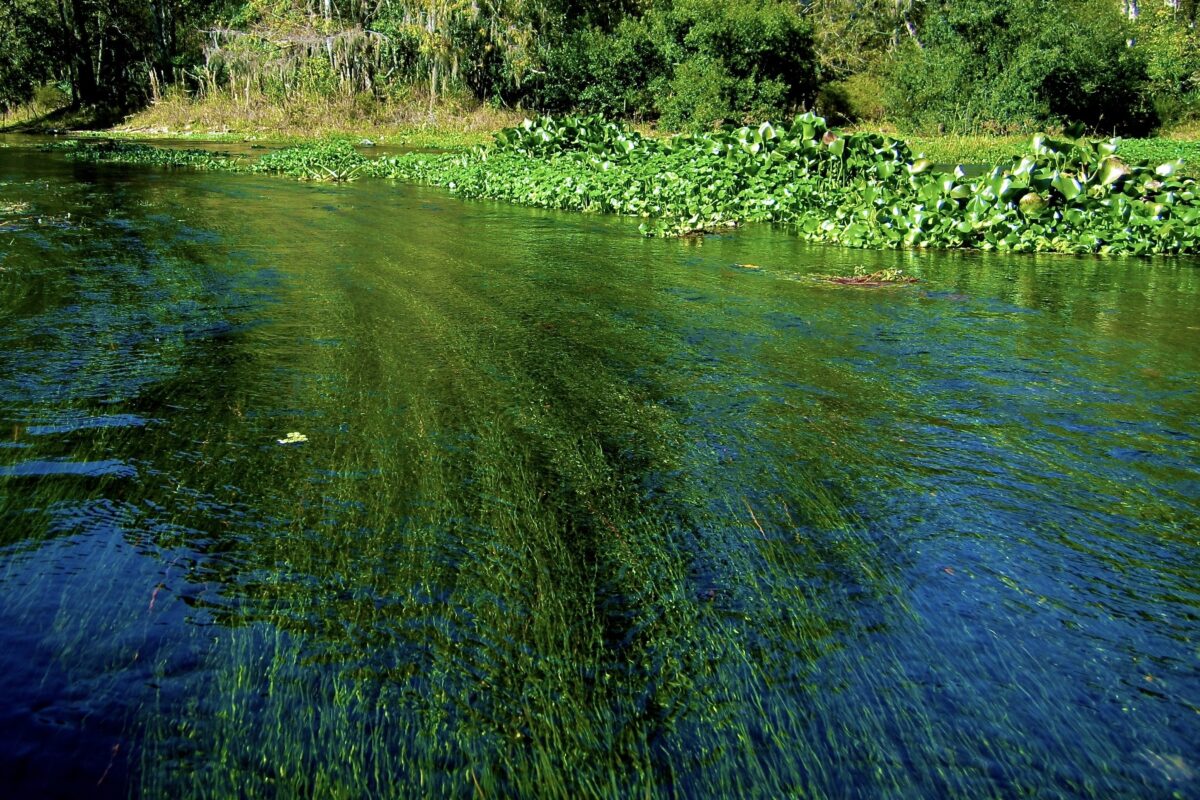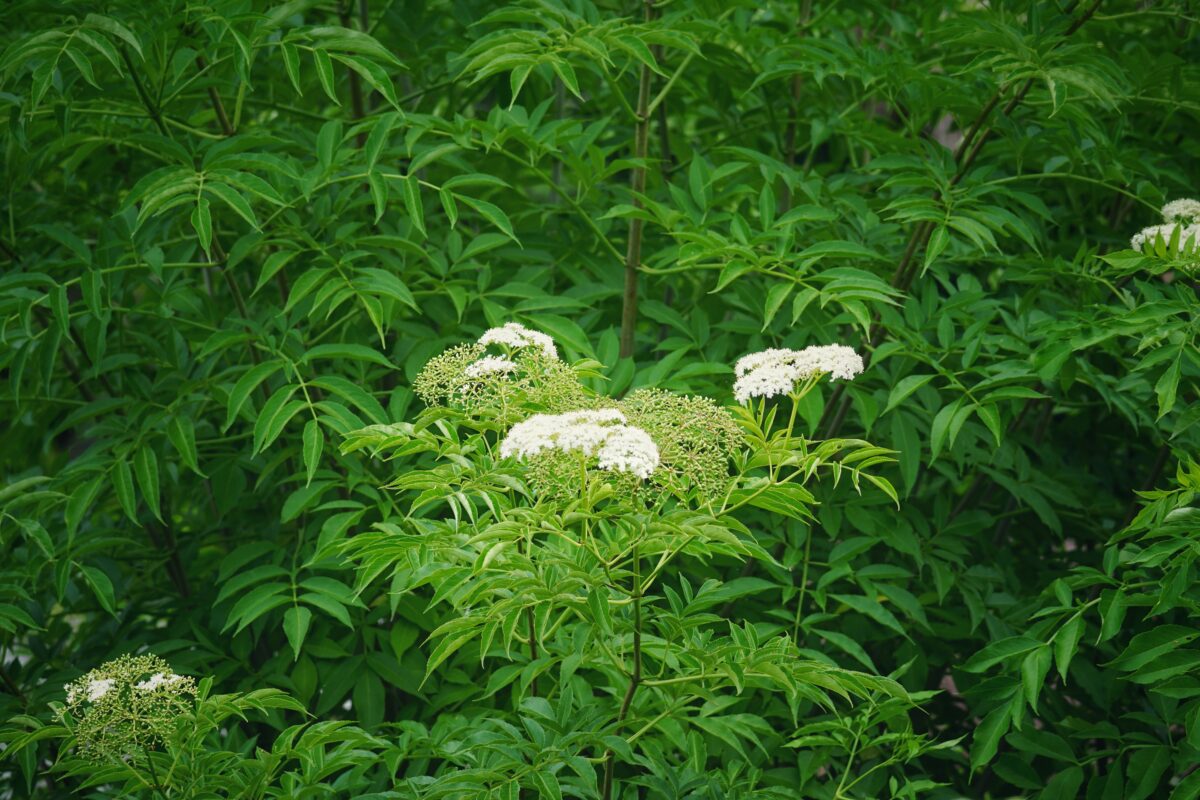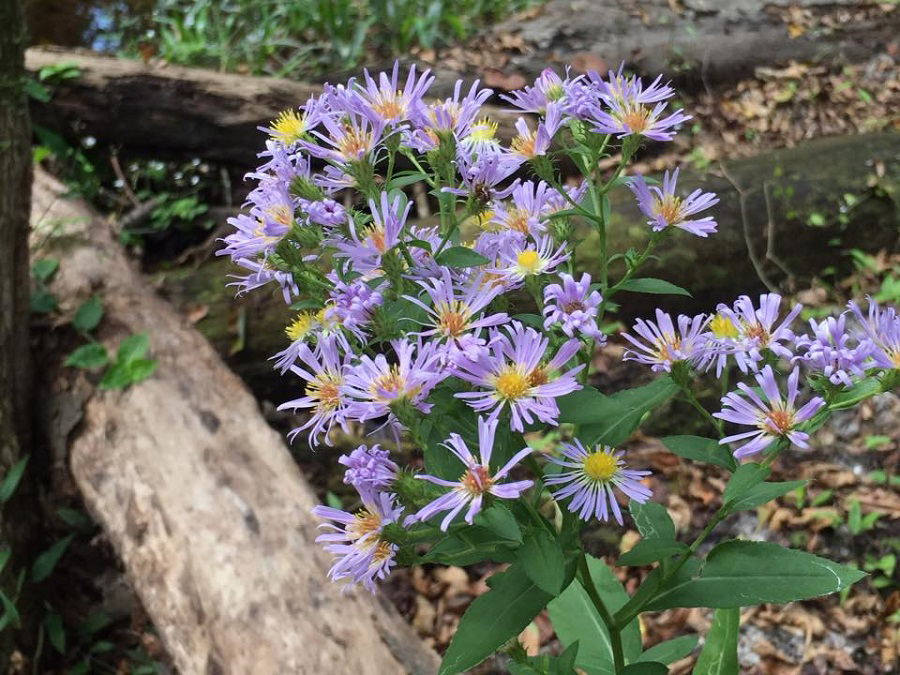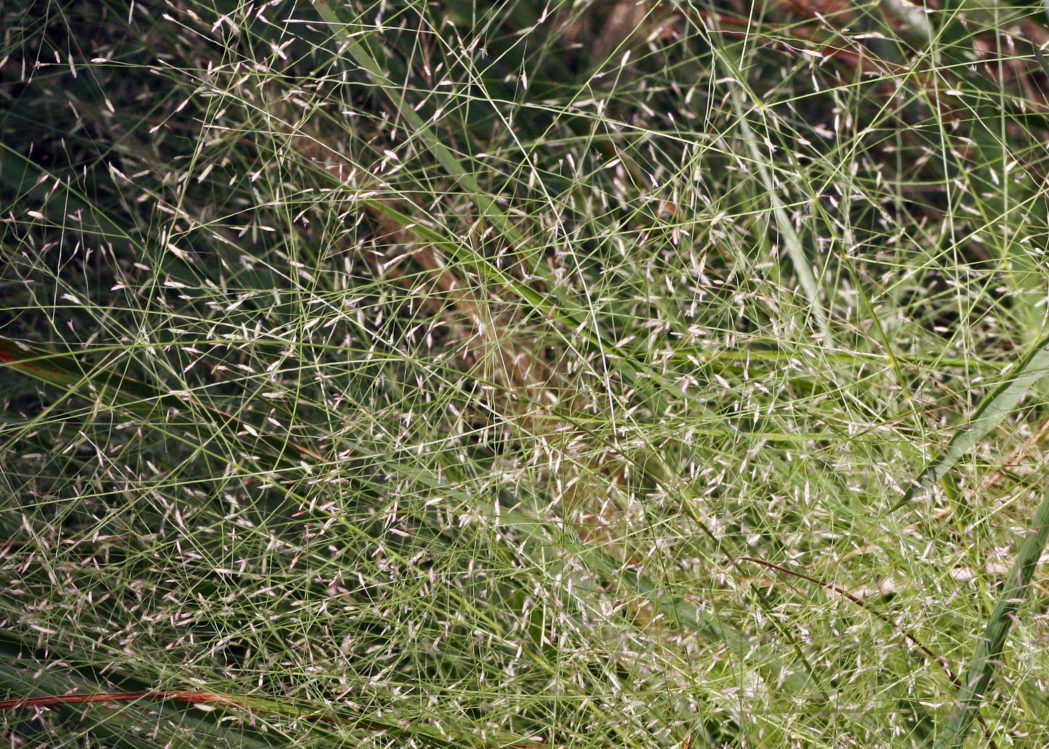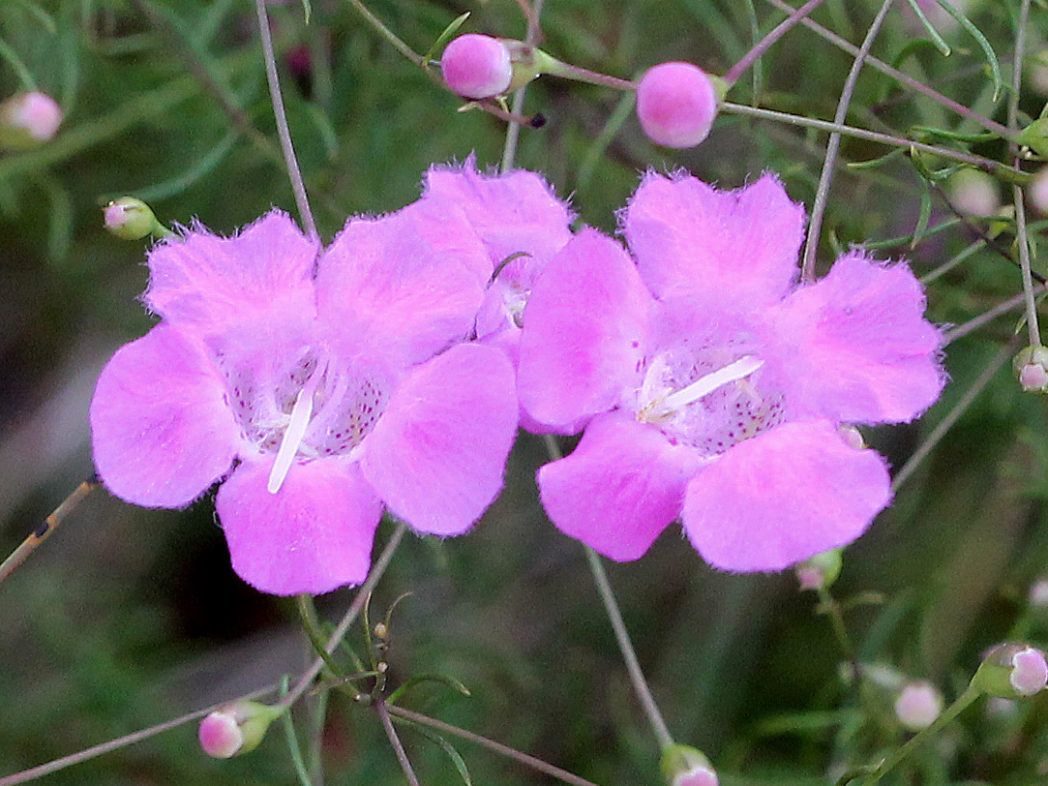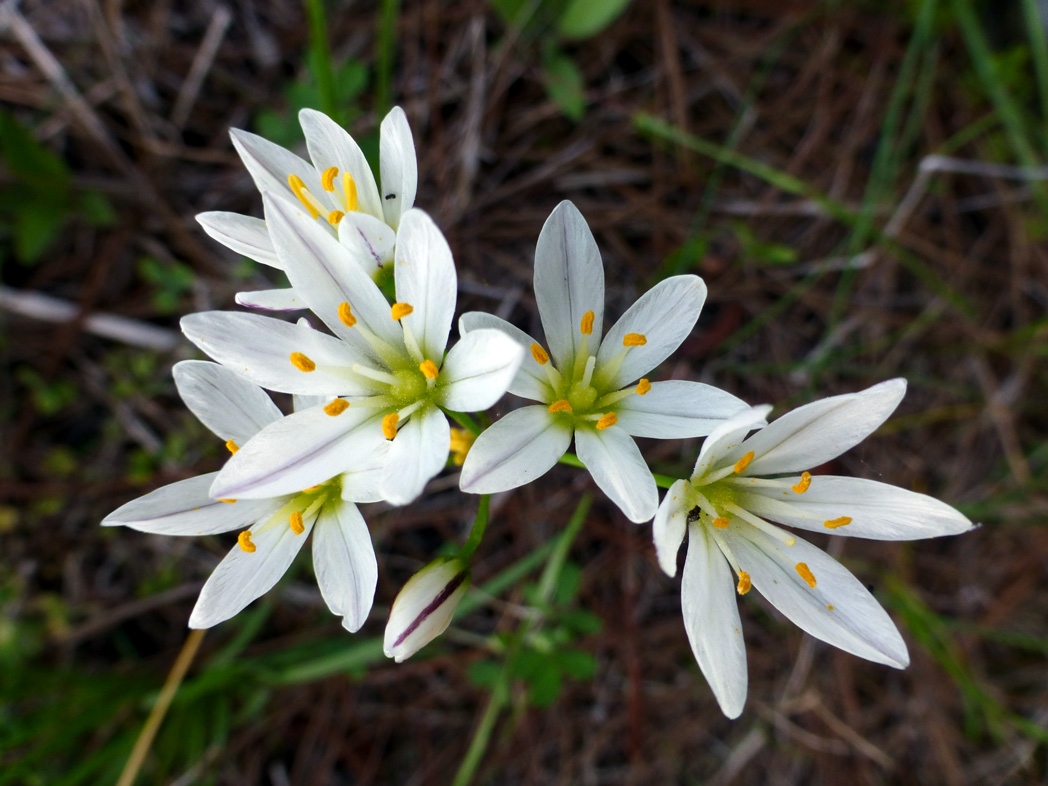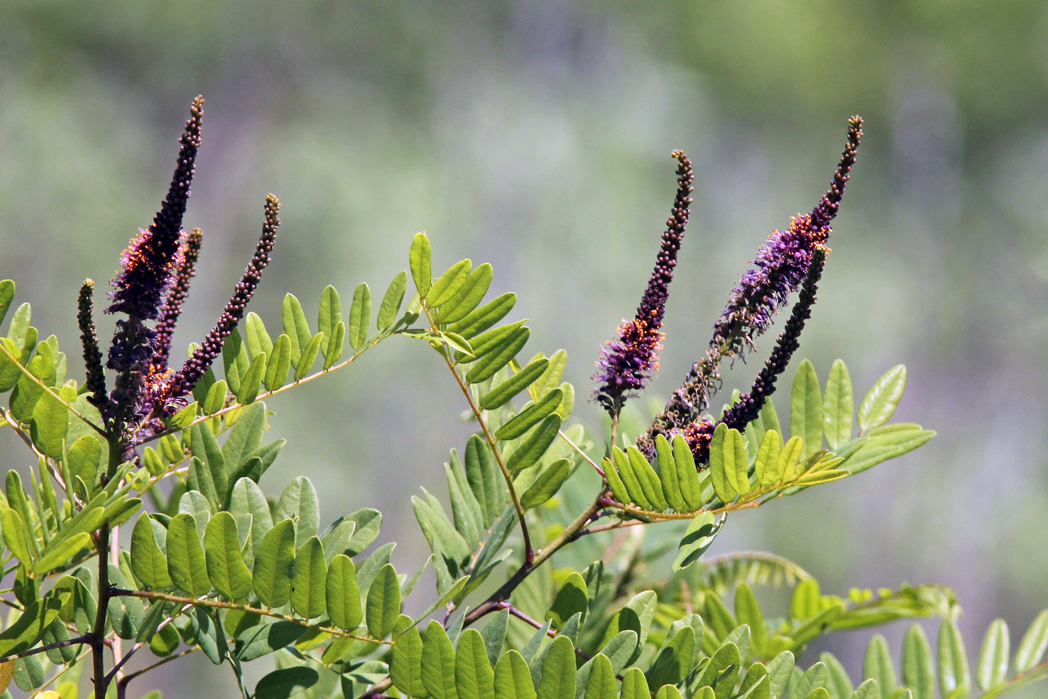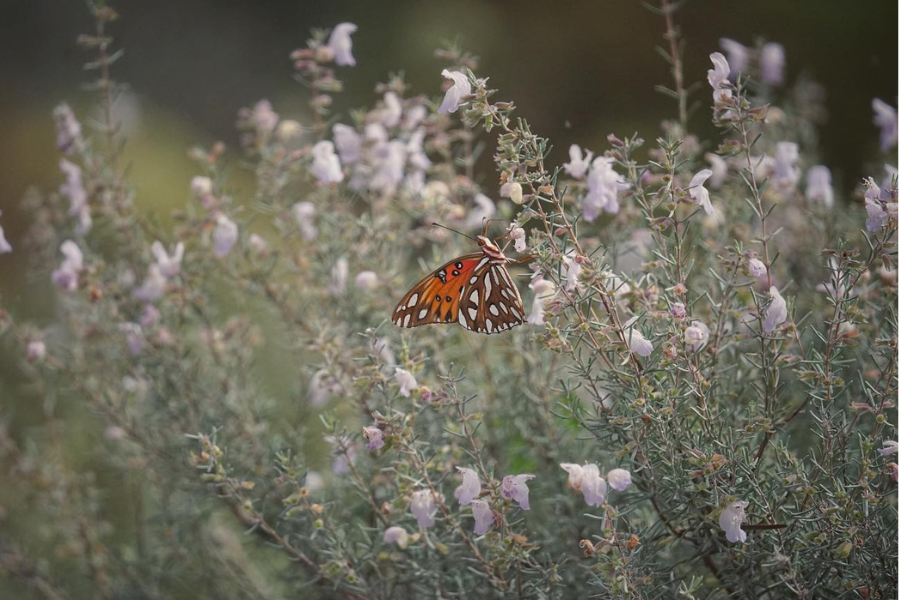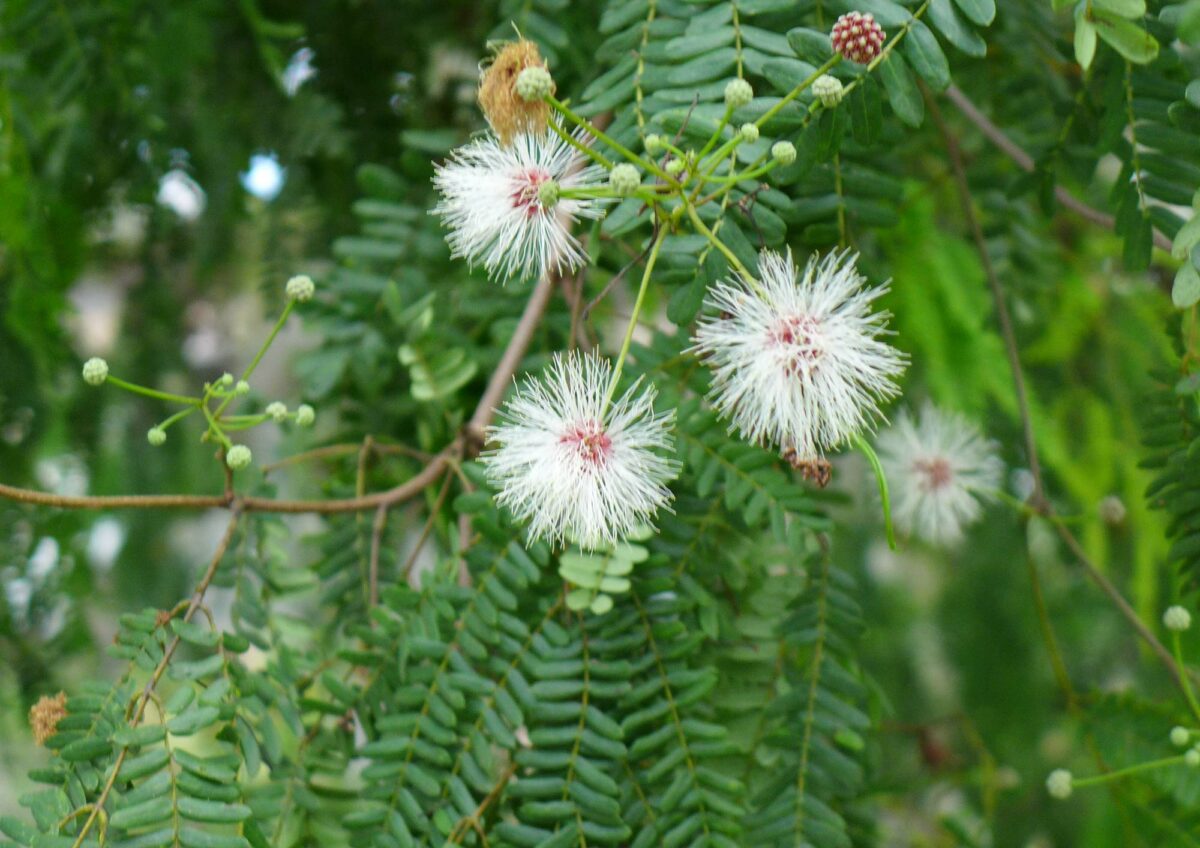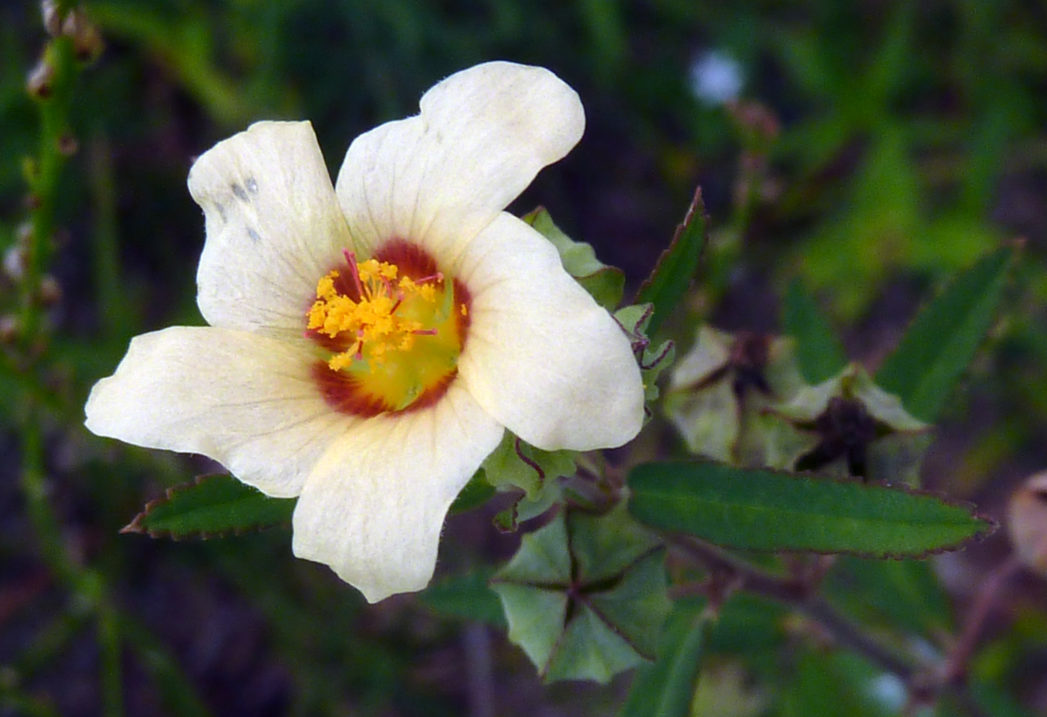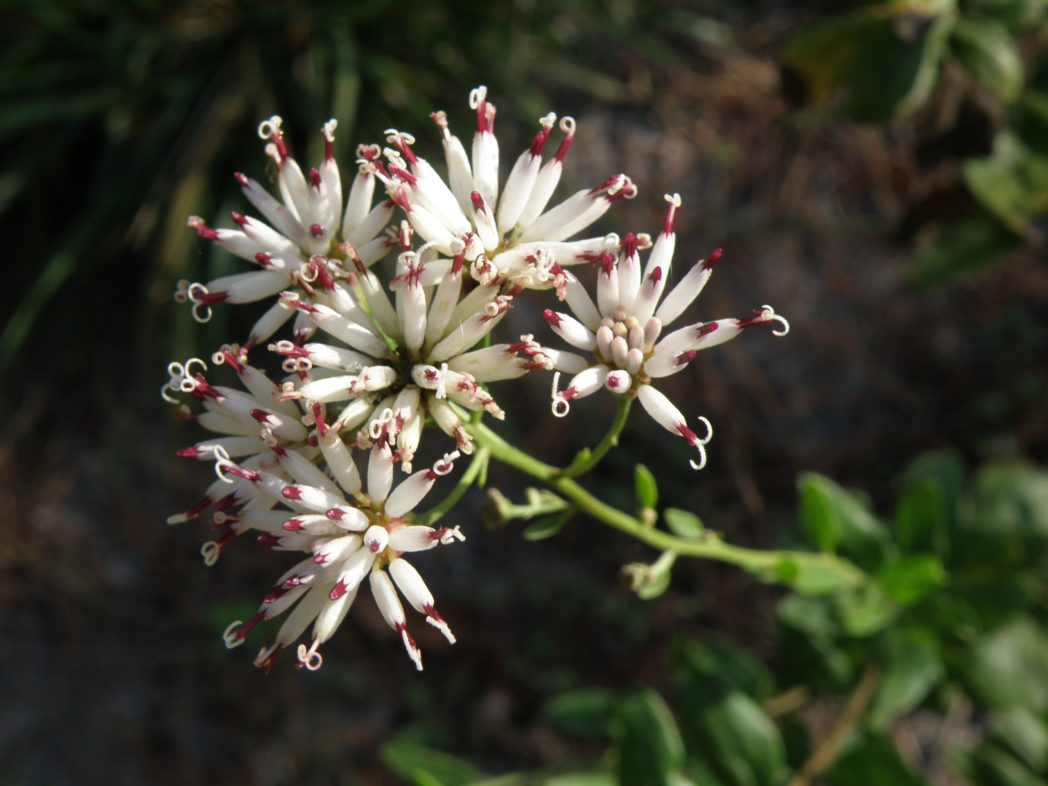Curtiss’ milkweed
Curtiss’ milkweed (Asclepias curtissii) is a long-lived and somewhat mysterious milkweed endemic to the Florida scrub.
Dahoon holly
Dahoon holly (Ilex cassine) is an evergreen tree or large shrub with exceptional landscape potential. It is easy to grow and attractive year-round. Its dense foliage and abundant fruit attract birds and other small wildlife.
Darrow’s blueberry
Darrow’s blueberry (Vaccinium darrowii) is a small shrub that is underappreciated as a landscape plant. Its profuse spring blooms attract many pollinators and the sweet summer berries are attractive to wildlife and edible for us too!
Dense gayfeather
Dense gayfeather (Liatris spicata ) has striking spikes of purple flowers that bloom late summer through fall and are excellent attractors of butterflies, bees and other beneficial insects.
Dimpled troutlily
For only a few months of very early spring, Dimpled troutlilies can be found blanketing the ground of sloped deciduous forests throughout the southeastern US. Listed as state-endangered, Florida’s populations are rare and limited to three counties in the Panhandle.
Dogtongue wild buckwheat
Even cat people love Dogtongue wild buckwheat (Eriogonum tomentosum)! This herbaceous perennial produces a plethora of white to pinkish flowers in late summer and fall. You’ll find it blooming in sandhills, scrub and pinelands in the Panhandle and north and central peninsula. It attracts a variety of pollinators, including the thread-waisted wasp and tiphiid wasp.
Drumheads
Drumheads (Senega cruciata) is a low-growing wildflower with small but showy pink flowerheads that bloom from late spring through fall.
Dune sunflower
Dune sunflower (Helianthus debilis) occurs naturally along the coast. Its bright flowers attract a variety of pollinators, its dense growth pattern provides cover for many small animals and birds enjoy its seeds.
Dwarf huckleberry
Dwarf huckleberry (Gaylussacia dumosa) is a low-growing colonial shrub found in pine savannas, flatwoods, sandhills and scrub throughout much of Florida. The plant is a larval host for the woodland elfin butterfly. Its spring flowers are attractive to pollinators, especially native and honey bees, and its juicy summer fruits are a delight for birds, small mammals and humans! Try them raw or make them into a jam or pie filling.
Eastern false dragonhead
Eastern false dragonhead (Physostegia purpurea) is an herbaceous perennial wildflower found in moist to wet pinelands and marsh and swamp edges throughout much of Florida. It blooms late spring through early fall and is especially attractive to bees, although butterflies and the occasional hummingbird are known to visit it. The seeds are eaten by birds.
Eastern purple bladderwort
Eastern purple bladderwort (Utricularia purpurea) is an aquatic carnivorous plant found in wetlands, freshwater swamps and shallow ponds and lakes throughout Florida. Its small but showy lavender flowers bloom year-round. This highly specialized plant feeds on insects and other small organisms caught in its bladder-like trap. Unsuspecting prey brush against tiny hairs that trigger a trapdoor. As the door closes, the organism and water are sucked into the bladder. With the bladder full and the door closed, the plant releases enzymes to digest the organism.
Eastern redbud
Eastern redbud (Cercis canadensis) typically flowers in March, at which time the entire crown of the tree will become covered in deep pink blooms.
Eastern silver aster
Eastern silver aster (Symphyotrichum concolor) is a winsome wildflower found in Florida’s pineland habitats. It typically blooms in fall but may bloom in summer and early winter.
Eelgrass
Eelgrass (Vallisneria americana) is a rooted submersed aquatic plant found in lakes, rivers, springs and estuaries across Florida. It is a foundational species in waterbodies, providing critical habitat and forage for a wide range of wildlife.
Elderberry
From spring through fall, dense stands of Elderberry (Sambucus nigra subsp. canadensis) with their large clusters of bright white flowers can be seen along Florida’s roadways and wetland edges. This prolific shrub to small tree is a haven for wildlife, providing cover and nesting areas for birds and small mammals as well as an abundance of food.
Elliott’s aster
Elliott’s aster (Symphyotrichum elliottii) is a perennial wildflower and wonderful plant for attracting butterflies, bees and other pollinators due to its many fragrant blooms.
Elliott’s lovegrass
Elliott’s lovegrass (Eragrostis elliottii) has tiny yet prolific seeds that provide plenty of food for invertebrates and small birds that also use the plant’s dense foliage for cover.
False foxglove
Seminole false foxglove (Agalinis filifolia) bears lovely pink flowers that attract many pollinators. The plant is parasitic and lives off nutrients it takes from the roots of other plants.
False garlic
False garlic (Nothoscordum bivalve) is a grasslike perennial with lovely star-shaped flowers. It typically blooms late winter through spring, but may bloom again in or continue blooming into fall. The unscented flowers attract a variety of pollinators, including small butterflies and native bees. The plant occurs naturally in moist woodlands and grasslands and along roadsides in North and Central Florida.
False indigo
False indigo (Amorpha fruticosa) has a striking spring and summer floral display that attracts many pollinators. The plant is a larval host for the Silver-spotted skipper, Southern dogface and Gray hairstreak butterflies.
False rosemary
False rosemary (Conradina canescens) occurs naturally in sand pine scrub and sandhills. Many pollinator species are attracted to false rosemary, but bees are the most prominent visitor.
False tamarind
The fragrant flowers of False tamarind (Lysiloma latisiliquum) are favored by South Florida butterflies and moths. The plant is a larval host, and provides food and cover for birds and other small wildlife, and habitat for a variety of snails.
Fanpetals
Fanpetals (Sida spp.) can bloom year-round and attract bees and butterfies, including the Tropical checkered skipper, for which they are a larval host.
Feay’s palafox
Feay’s palafox (Palafoxia feayi) is a very unique wildflower, endemic to Florida’s central and southern peninsula. It is a member of the Aster family, but bears few visual similarities.

